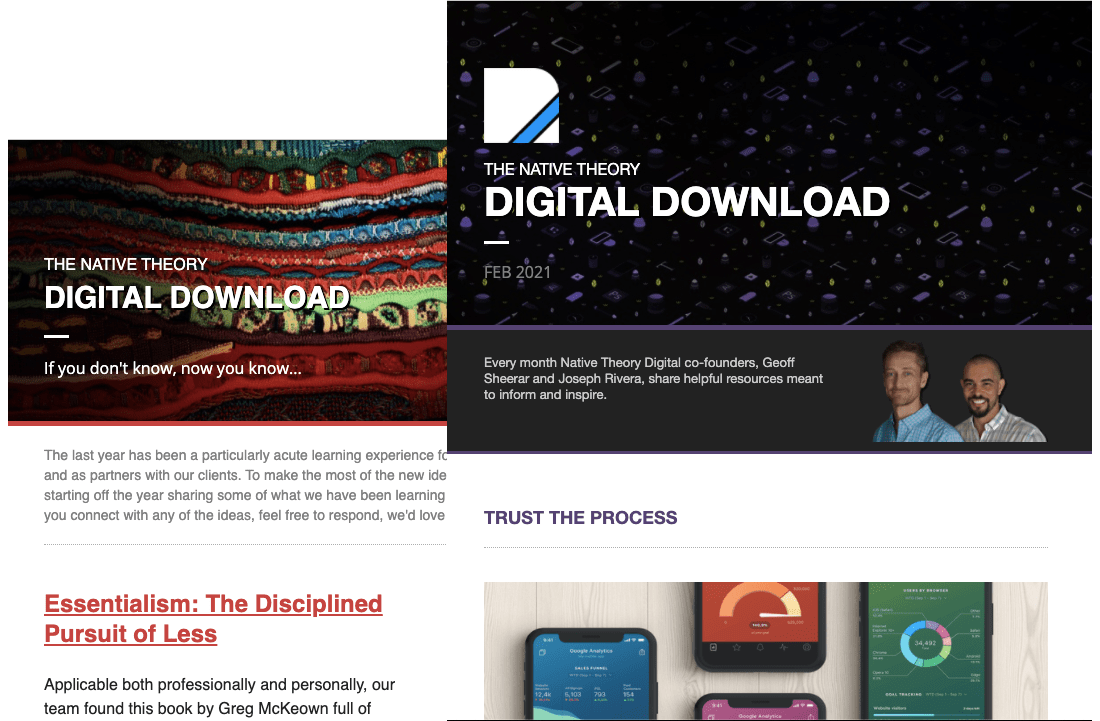Are your email open rates low? Are you struggling to drive conversions through your email marketing campaigns? Don’t worry, you’re not alone. Grabbing the attention of your subscribers and getting them to engage with your emails is becoming increasingly challenging.
However, there are proven strategies—now supercharged with artificial intelligence (AI)—that can help you start mastering the art of effective email marketing and boost your open rates.
The Importance of Email Marketing for Businesses
Email marketing is a powerful tool that allows businesses to directly communicate with their target audiences. It helps build relationships, increase brand awareness, and drive conversions. In fact, email marketing has consistently proven to be one of the most effective digital marketing channels, delivering an impressive ROI. According to recent studies, for every $1 spent on email marketing, the average return on investment is $42. (Source: Litmus)
AI now plays an increasingly valuable role in this process. It can analyze customer behavior and automatically tailor campaigns based on engagement levels, preferred content types, and purchase history—making it easier to build meaningful relationships at scale.
Email marketing also allows you to segment your audience based on their preferences, behaviors, and demographics, ensuring that your message resonates with the right people at the right time. This level of personalization builds trust and loyalty among your subscribers, helps you nurture leads, drive repeat purchases, and ultimately grow your business.

Email Marketing Statistics and Trends
Before getting into the strategies and tactics of effective email marketing, let’s take a moment to review some key statistics and trends in the industry:
- The average open rate for emails across industries is around 21.33%, though it varies by audience and list quality. (Source: Mailmunch)
- More than 55% of emails are opened on mobile devices, so mobile-friendly design is critical. (Source: Branch.io)
- Personalized subject lines are 26% more likely to be opened. (Source: Paubox)
- Automated email campaigns (e.g., welcome series, cart reminders) can yield up to 152% higher engagement than one-off sends. (Source: LinkedIn)
- AI-powered predictive sending is on the rise. Tools can now determine the best time for each subscriber to receive an email, maximizing open rates and engagement.
By keeping these stats and tech-forward trends in mind, you’ll be better equipped to plan smart, performance-driven campaigns.
Building an Effective Email Marketing List
Before being able to send effective email campaigns, you need to build a high-quality email marketing list. The success of your email marketing efforts heavily relies on the quality and relevance of your subscribers. Here are some key tactics to help you grow your email list and attract the right audience:
- Website Sign-up Forms: Place sign-up forms prominently on your website to capture visitors’ email addresses. Consider offering an incentive, such as a free e-book or discount, to encourage sign-ups.
- Social Media Promotion: Leverage your social media channels to promote your email newsletter and encourage followers to join your list. Consider running contests or giveaways to incentivize sign-ups.
- Content Upgrades: Offer exclusive content upgrades, such as downloadable guides or templates, to visitors who subscribe to your email list. This not only provides value to your audience but also helps you capture their email addresses.
Remember that building an email list is an ongoing process. It’s important to regularly review and clean your list to ensure it remains engaged and relevant. Remove inactive subscribers, keep an eye on bounced emails, and constantly seek to attract new subscribers who align with your target audience.

Building an Effective Email Marketing List
Before you can send effective email campaigns, you need a high-quality, engaged list. Here are key tactics to grow your list with the right audience:
- Website Sign-up Forms: Place them prominently with a clear call to action
- Social Media Promotion: Promote your list on platforms and offer appealing incentives.
- Content Upgrades: Offer downloadable resources (guides, templates, checklists) in exchange for email sign-ups.
AI tools can enhance these efforts by analyzing your website visitors’ behavior to suggest the best lead magnet for each user. Some platforms use machine learning to identify patterns and recommend the highest-converting content for list-building efforts.
Be sure to regularly clean your list by removing inactive subscribers and bounced emails to maintain strong deliverability.
Crafting Compelling Subject Lines and Email Content
Your subject line is your first impression—and an open-or-ignore it moment. Here are some tips:
- Personalization: Tailor the subject line to your target market’s preferences.
- Curiosity: Spark intrigue, but avoid clickbait.
- Urgency: Use time-sensitive language to create FOMO.
Now with AI tools, you can take this even further:
- Use AI-powered subject line generators that analyze millions of campaigns to suggest high-performing options.
- Run quick A/B tests using predictive models to optimize open rates.
Once opened, your email must deliver value. Best practices for writing email content:
- Offer Value: Use your expertise to provide helpful information, practical insights, and exclusive offers.
- Be Clear and Concise: Keep paragraphs short, use bullet points and subheadings.
- Compelling Copy: Use storytelling and benefits-driven language.
- Call-to-Action (CTA): Make it obvious what action you want readers to take.
AI writing assistants like ChatGPT, Jasper, or Grammarly Business can help you write smarter and faster—while keeping tone, clarity, and intent aligned with your goals.
Personalization and Segmentation in Email Marketing
Generic emails are out. Segmentation and personalization are in.
- Personalization: Use data to recommend products, send birthday offers, or trigger behavior-based messages.
- Segmentation: Group subscribers by traits like purchase history, location, or engagement levels.
AI makes these strategies more powerful:
- Use AI tools to automatically create dynamic audience segments based on behaviors like click history or purchase patterns.
- Machine learning can detect subtle patterns in user behavior and adapt your email content in real-time to make it more relevant.
The result? Higher open rates, more clicks, and deeper engagement.

Optimizing Email Deliverability and Open Rates
The best content won’t matter if your emails land in spam. Here’s how to improve deliverability:
- Maintain a Clean List: Regularly remove bounces and inactive addresses.
- Monitor Your Sender Reputation: Watch spam complaints and engagement metrics.
- Avoid Spam Triggers: Be mindful of language, formatting, and overuse of “spammy” phrases.
AI platforms can now predict spam risks before you send. These tools flag potential issues in your email’s tone, structure, or frequency—so you can fix problems and protect your sender reputation.
Call-to-Action Strategies for Driving Conversions
Your CTA is the bridge between engagement and action. Make it count.
- Clear & Compelling: Use strong, urgent language—like “Download Now” or “Claim Your Spot”.
- Design & Placement: Use bold buttons, contrasting colors, and place it above the fold.
Test & Refine: Run A/B tests to find the most effective version.
Email Marketing Analytics and Tracking
To improve performance, you need to track results. Key metrics include:
- Open Rate – Measures subject line effectiveness
- Click Rate – Gauges content and CTA performance
- Conversion Rate – Tracks whether recipients took your intended action
- Bounce Rate – Monitors list health and deliverability
AI-powered dashboards now go beyond basic metrics. Predictive analytics can help you forecast future performance, automatically surface insights, and even recommend changes—turning your data into a strategy engine.
Take the First Step Towards Mastering Email Marketing
Email marketing remains one of the most effective ways to engage your audience—but it’s evolving fast. By incorporating AI tools and tactics into your campaigns, you’re no longer guessing. You’re optimizing every part of the process—from segmentation to subject lines to CTAs—with data-backed intelligence.
To recap, focus on:
- Crafting compelling subject lines and value-driven content
- Personalizing and segmenting using behavioral data
- Offer valuable insights and information
- Optimizing deliverability and CTA performance with AI insights
- Continuously testing, measuring, and improving
Want support in sharpening your email marketing?
Contact us today for a consultation and review.



